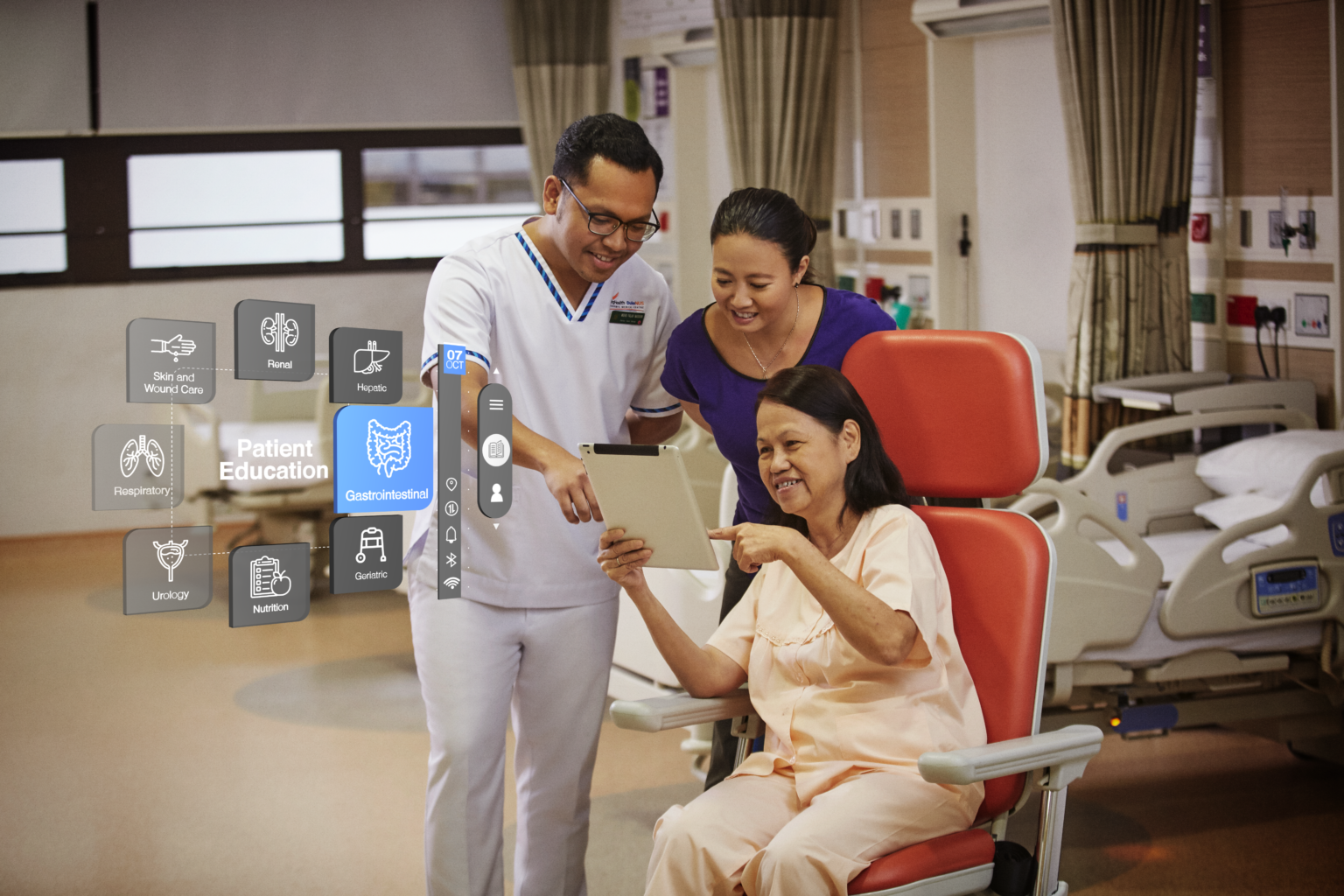SGH’s vision for digital-first, smart healthcare
)
Director of Singapore General Hospital’s Future Health System, Mr Geoffrey Gui, tells us about the hospital’s smart hospital strategy
Singapore General Hospital, the largest acute tertiary hospital in the city-state, has consistently ranked among the top hospitals not only in Asia but also globally.
Besides securing the 9th position on Newsweek’s World’s Best Hospitals 2023 list, it has also earned recognition as one of the select ‘smart hospitals’ worldwide.
This is a nod at the hospital’s implementation of smart technologies that improve patient care and operational efficiency.
|
Mr Geoffrey Gui |
The achievement did not come by chance. In 2020, SGH’s Future Health Systems (FHS) department was established to spearhead the hospital’s efforts on this front. “We are focused on looking at new solutions, technologies, and new ways of doing things to build a smarter, transformed SGH in the years to come. The end goal in mind is to leapfrog the hospital into the future,” said Mr Geoffrey Gui, Director of FHS. |
Defining a smart hospital
SGH’s vision of a smart hospital can be summarised into three constructs, namely smart treatment, smart services, and smart management, noted Mr Gui.
Firstly, ‘smart treatment’ refers to the use of smart solutions towards excellent patient outcomes.
“We look across our main service lines of outpatient, inpatient, emergency and surgical services to identify areas of care transformation, and the kind of technologies or solutions we can bring in to deliver this transformation,” he explained.
“So far, we have adopted 3D printing of patient-specific anatomical models for surgical planning and rehearsals. We have also entered the holomedicine and extended reality space to help with such planning, and for patient education.”
Meanwhile, the pillar on ‘smart services’ reflects the use of innovative technologies to enhance patient and staff experience.
All inpatient beds across the SingHealth cluster – which consists of SGH and a network of tertiary, community, and specialty care facilities – are now equipped with bedside tablets. These are installed with the MyCare app, which allows patients to access their personal care information, such as their daily care schedule, test results, upcoming investigations and so on.

Patients can also use the app to put in simple requests for beverages, housekeeping, or assistance. Nurses are then alerted to the requests immediately on their mobile devices, enabling faster turnaround time and better productivity.
Last but not least, ‘smart management’ aims to leverage technology in developing integrated and efficient operations.
There are several ongoing projects under this category, one of which involves constructing a ‘digital twin’ of the hospital. According to Mr. Gui, this initiative aims to create “a mirror” and “digital record of what’s happening in the hospital.”
Other areas being explored including resource and supply chain optimisation, decision support and smart facility management.
Paving the way for innovation
FHS takes on a facilitator role here, collaborating closely with the respective departments or units throughout their journey from ideation to deployment.
“The innovation process can be fairly complex to navigate for our clinicians or administrators. For example, in liaising with vendors or regulators, our AI & Automation and Innovation & Technology units are there to support them every step of the way,” he said.
Meanwhile, its Future Workforce Development unit takes on the role of leading change management. This involves engaging staff on the reasons behind each new technology or redesigned process, and developing the appropriate training for staff.
On the other hand, besides supporting in-house innovation, FHS also proactively scans the horizon for novel solutions and innovations emerging in the market or within other industries, pointed out Mr Gui.
The team evaluates these solutions to determine if they could effectively address specific pain points and are in line with the hospital’s overarching innovation strategy and direction.
|
Examples of innovative solutions driven with internal and external partners SGH is happy to explore partnerships both within and beyond its organisation to drive innovation, Mr Gui affirmed. |
The ‘Phygital’ hospital of the future
So where would all these innovations lead us to, and what can we expect SGH of the future to look like?
Mr Gui noted that a key focus is the transformation into a digital-first facility.
“This doesn’t mean digital-only – this means presenting digital touchpoints to our patients for easier access to care,” said Mr Gui.
Case in point is the SGH@Home initiative, where patients – who would have otherwise been hospitalised – are cared for in their own homes, through the use of digital enablers such as remote monitoring devices.
The rise of digital-enabled care ties in with the broader shift of care beyond hospital walls – and with that, the definition of a hospital beyond the traditional brick-and-mortar facility.
The future hospital can be conceputalised as a ‘phygital’ hospital, that strikes the right balance between physical and digital-based care.
The growth and future possibilities of digital health is a key consideration in SGH’s ongoing major redevelopment plans, which will see a new SGH being built on a new site on SGH Campus. SGH is analysing the trends and developments in the wider healthcare landscape, to determine the optimal projection of beds, consultation rooms and operating theatres needed, revealed Mr Gui.
Alongside this is the need to build up partnerships and capabilities with various stakeholders in the community, to ‘enable the right care delivered at the right time and the right setting’, he added.
Mr Gui emphasised: “We’ll still need a physical facility for services such as diagnostics and surgeries. The main question is the scale or complexity (of the patient’s condition) at which we can decentralise the care out into the community. The level of care must be on par if not better than that provided in the hospital.”
“If we can render our services digitally – through telehealth or SGH@Home, for example – SGH’s presence will not be limited to its physical location, but extend into the community and into the virtual space. This can help us scale even further beyond, possibly regionally or even internationally.”


